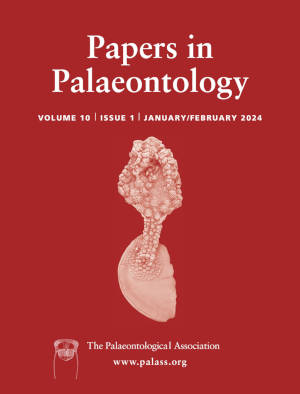Article: Macrofloral biostratigraphy reflects late Carboniferous vegetation dynamics in the Nord-Pas-de-Calais Coalfield, France
Publication: Papers in Palaeontology
Volume:
10
Part:
2
Publication Date:
2024
Article number:
e1551
Author(s):
Azucena Molina-Solís, Christopher J. Cleal, Claude Monnet, and Borja Cascales-Miñana
DOI:
10.1002/spp2.1551
Abstract
Abstract The Nord-Pas-de-Calais Coalfield is formed by an almost continuous succession of upper Carboniferous deposits, from which an extremely diverse macroflora has historically been described. Recent evidence has highlighted a clear pattern of changing species diversity, showing some differences from what is seen in other coalfields of Variscan Euramerica. We further study this significant macroflora, focusing on the biostratigraphical changes and their palaeoecological implications. Clustering and ordination analyses have indicated key floral discontinuities that enable the standard regional macrofloral biozones to be recognized in the Nord-Pas-de-Calais Coalfield. By combining these results with the previous diversity studies, six distinct phases in the evolution of the coal swamp vegetation in north-eastern France can be identified: (1) an initial invasion of peat substrate vegetation in the earliest Langsettian; (2) a rapid diversification of the clastic substrate vegetation in the early–middle Langsettian; (3) a more gradual diversification of the vegetation of both clastic and peat substrates during the late Langsettian to middle Duckmantian glacial phase C3; (4) the appearance of more characteristically late Westphalian, but less diverse floras during the late Duckmantian to early Bolsovian C3–C4 interglacial phase; (5) a marked increase in species diversity in the middle–late Bolsovian, coinciding with the onset of the C4 glacial phase; and (6) a marked reduction in species diversity, and the appearance of new medullosaleans and marattialeans in the Asturian, possibly linked to climate change. The evidence clearly shows how this palaeotropical swamp vegetation was responding to climate change and orogenic landscape changes during Westphalian times.
